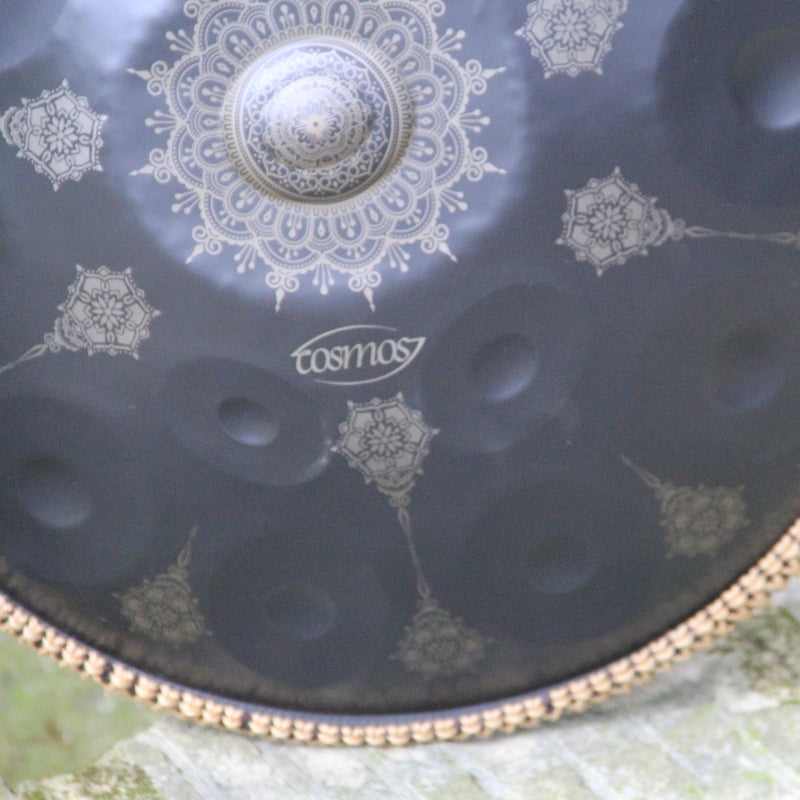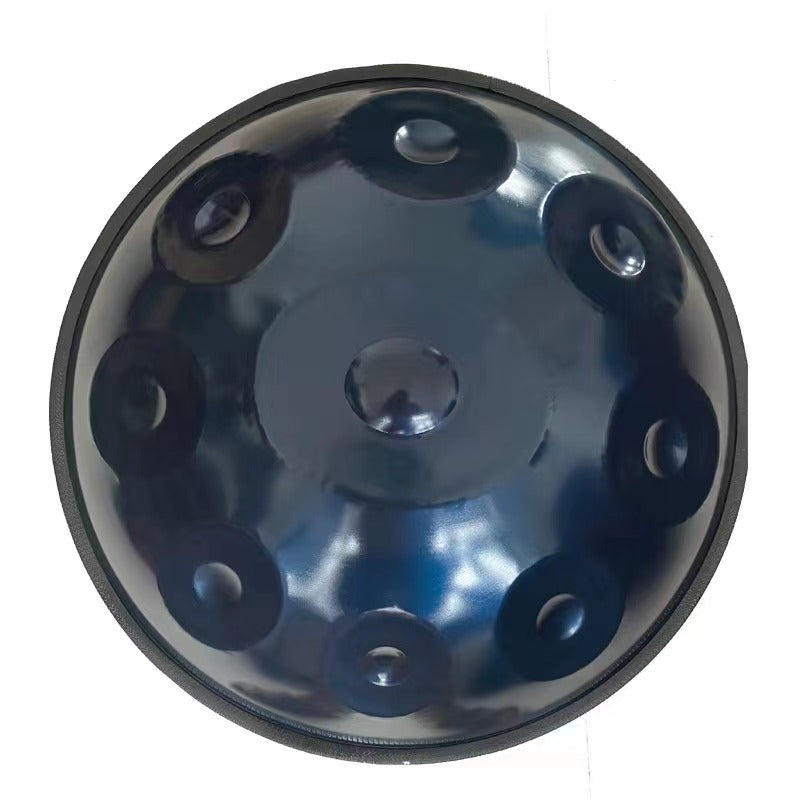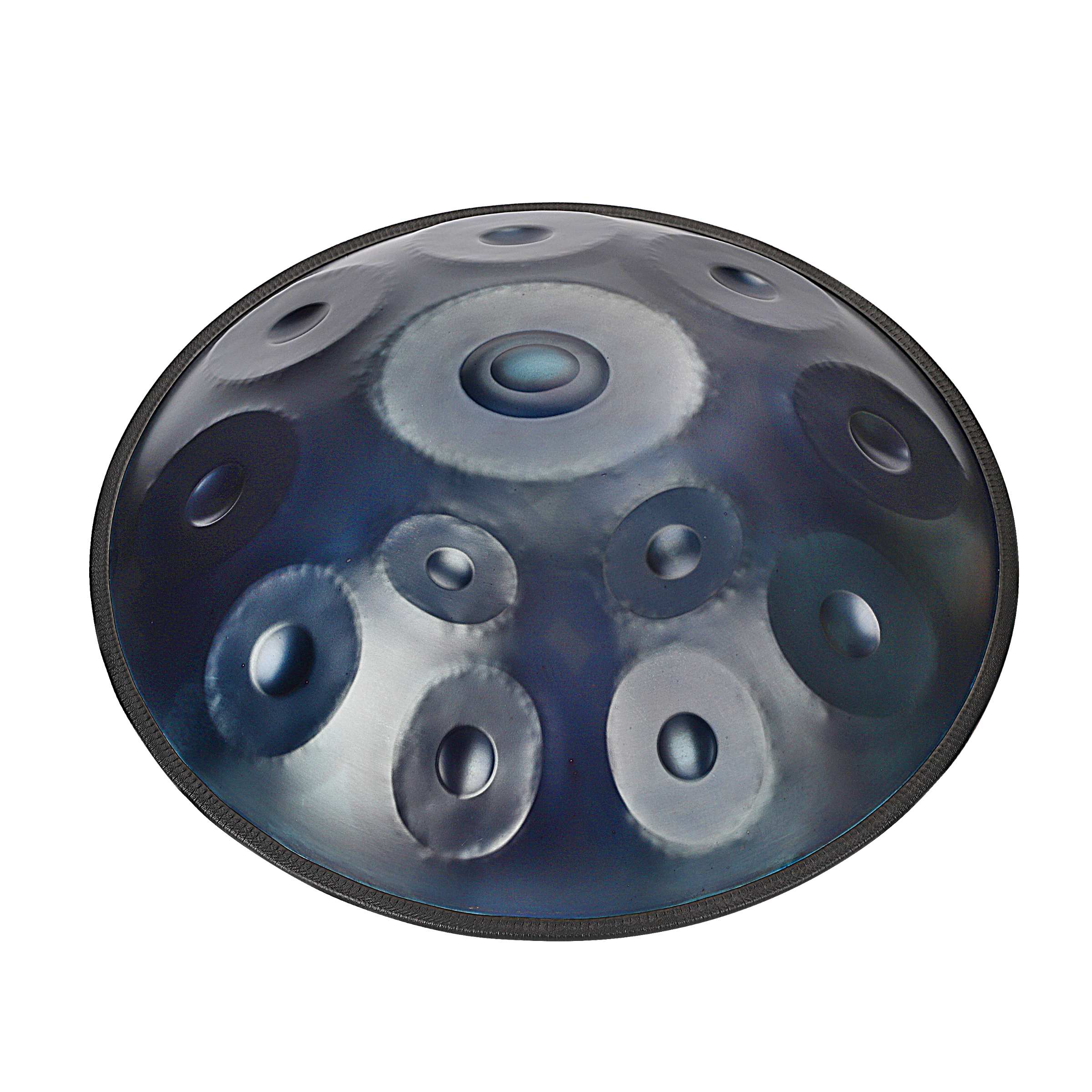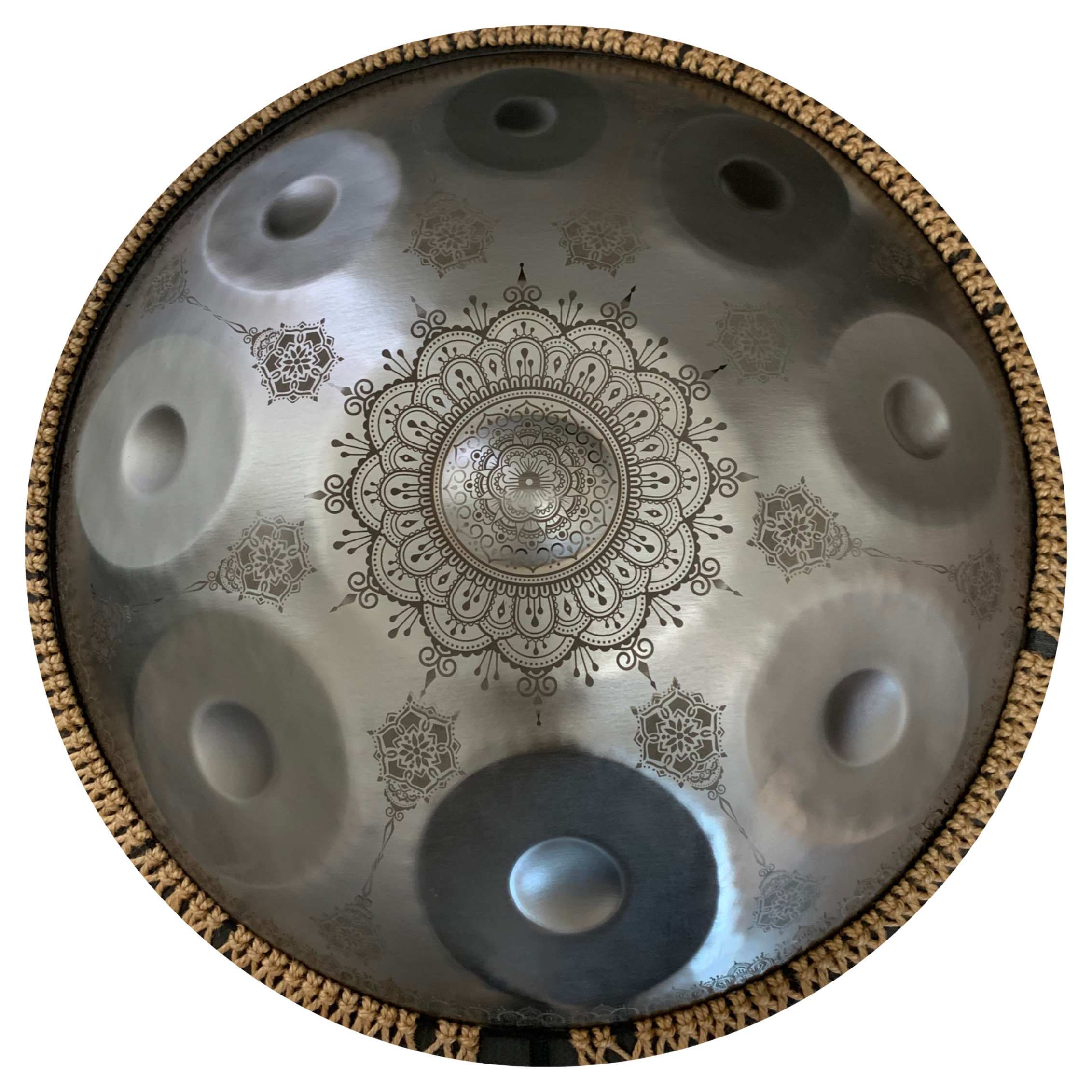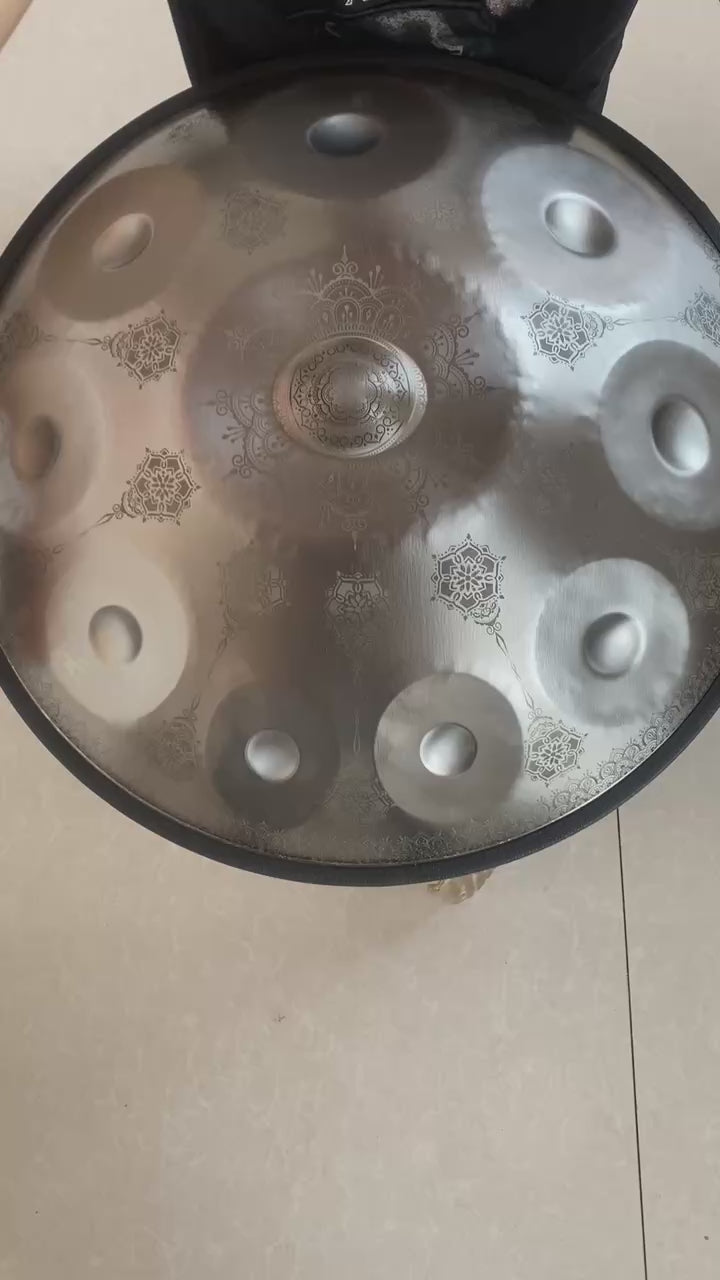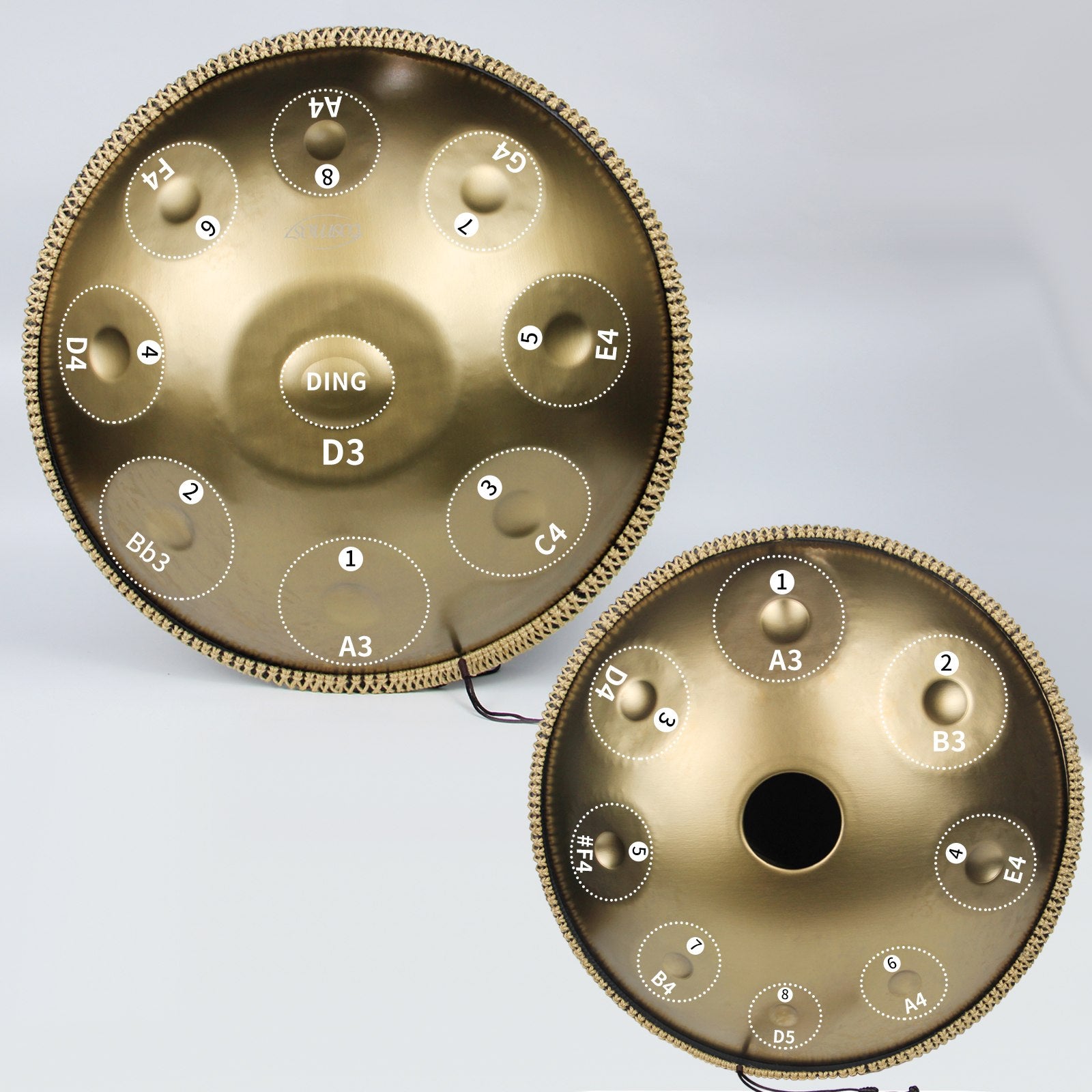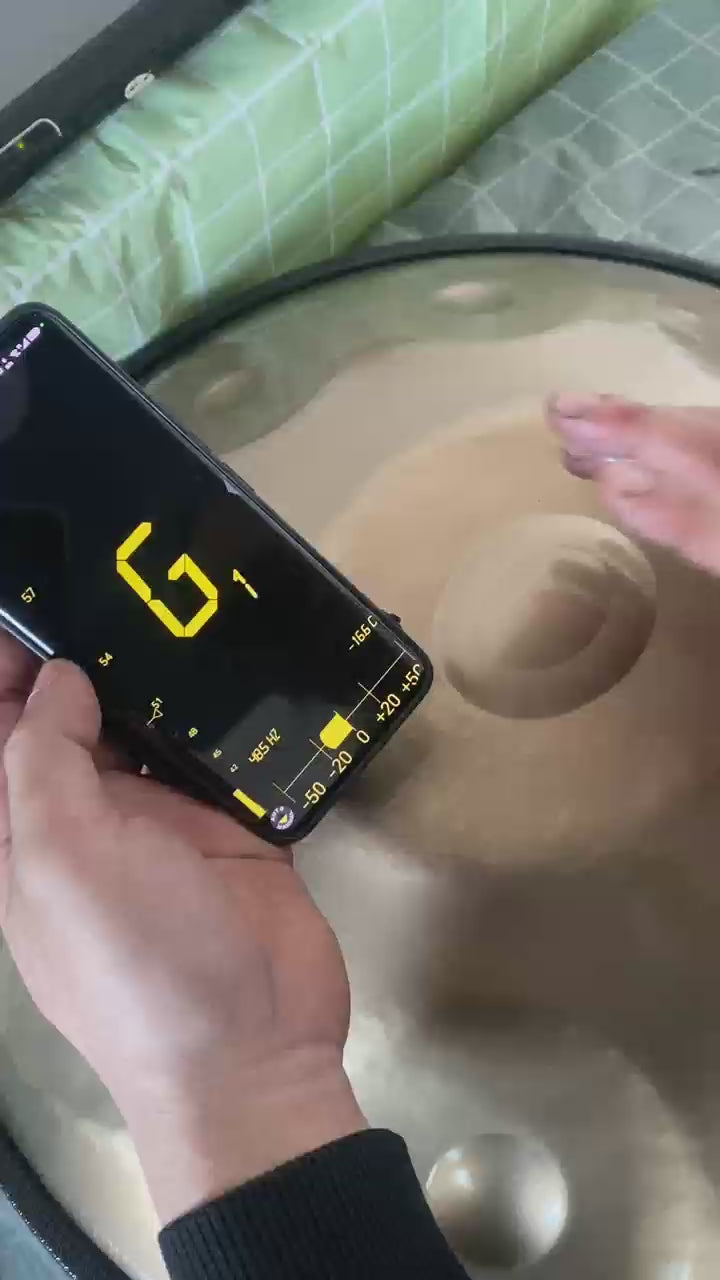Stellen Sie sich ein Instrument vor, das wie eine Mischung aus Stahlpfannen, einer Harfe und vielleicht sogar einem Hauch von den Klangschalen klingt, die für Meditation verwendet werden. So ähnlich ist das, was die Handpan-Trommel hervorruft. Es ist ein relativ neues Instrument, das an Beliebtheit gewinnt, mit einem einzigartigen Klang und einer fesselnden Präsenz.
Was ist ein Handpan Drum?
Die Handpan, obwohl sie in Form einer Trommel ist, ist technisch gesehen ein Schlaginstrument. Sie besteht aus zwei metallischen Halbschalen, die miteinander verbunden sind. Die Oberseite hat einen zentralen Ton, oder "Ding", der von einem Kreis zusätzlicher Tonfelder umgeben ist. Die Unterseite hat ein Loch, das "Gu" genannt wird.
Diese Instrumente sind sorgfältig handgefertigt, und die Art und Weise, wie das Metall geformt und gestimmt wird, erzeugt ihren einzigartigen, ätherischen Klang.
Handpan spielen
Im Gegensatz zu traditionellen Trommeln werden Handpans mit den Händen und Fingern anstelle von Stöcken gespielt. Spieler können verschiedene Töne und Rhythmen erzeugen, indem sie die Klangfelder auf unterschiedliche Weise anschlagen. Die grundlegende Technik ist recht einfach zu erlernen, wodurch die Handpan auch für Anfänger zugänglich ist.
Der beruhigende Klang des Handpan
Der Klang des Handpans ist es, der ihn wirklich besonders macht. Er ist sowohl sanft als auch resonant, mit einer beruhigenden, fast hypnotischen Qualität. Die Töne verschmelzen wunderschön und schaffen ein Gefühl von Ruhe und Introspektion. Das macht ihn zu einer beliebten Wahl für Meditation, Yoga, Klangtherapie und einfach zum Entspannen.
Die Vielseitigkeit des Handpans
Während das Handpan für seinen meditativen Klang bekannt ist, ist es überraschend vielseitig. Erfahrene Spieler können komplexe Melodien, Harmonien und sogar perkussive Rhythmen erzeugen. Dies eröffnet Möglichkeiten für verschiedene Musikgenres, von Ambient und atmosphärisch bis hin zu beschwingt und folkinspiriert.
Die Wahl eines Handpan-Durms
Wenn Sie interessiert sind, ist es wichtig, das richtige Handpan zu finden. Hier sind ein paar Dinge, die Sie beachten sollten:
- Stimmung:Handpans gibt es in verschiedenen Skalen und Stimmungen, jede mit einem einzigartigen Gefühl. Recherchieren Sie beliebte Skalen, um eine zu finden, die mit Ihnen in Resonanz steht.
- Material:Handpans werden typischerweise aus Stahl oder Edelstahl hergestellt. Jedes Material hat subtile Unterschiede im Klang und in der Sustain.
- Preis:Handpans sind handgefertigte Instrumente und können im Preis variieren; erwarten Sie, einen angemessenen Betrag für ein qualitativ hochwertiges Instrument zu investieren.
Die Ursprünge des Handpans
Während das Handpan wie eine moderne Kreation erscheint, reichen seine Wurzeln weiter zurück, als man denken könnte. Es lässt sich von verschiedenen Instrumenten aus der ganzen Welt inspirieren:
- Steelpan: Die Steelpan, aus Trinidad und Tobago, hat eine ähnliche Konstruktion mit der Verwendung von Metall.
- Ghatam: Dieser indische Tonkrug hat einen resonanten perkussiven Klang, der den Ton des Handpans beeinflusst.
- Gamelan: Indonesische Gamelan-Ensembles verwenden verschiedene Metallpercussion-Instrumente, die möglicherweise die Anordnung der Klangfelder des Handpans inspiriert haben.
Die therapeutische Kraft des Handpans
Der beruhigende Klang des Handpans hat ihn zu einem beliebten Werkzeug für Entspannungs- und Achtsamkeitspraktiken gemacht. Hier ist, wie sein Klang vorteilhaft sein kann:
- Stressabbau: Die beruhigenden Melodien und Harmonien können helfen, Angst zu lindern und ein Gefühl von Frieden zu fördern.
- Achtsamkeit: Das Spielen des Handpan kann meditativ sein und den Geist auf den gegenwärtigen Moment fokussieren.
- Klangheilung: Einige Praktizierende glauben, dass die Vibrationen des Handpans einen positiven Einfluss auf das körperliche und emotionale Wohlbefinden haben können.
Abschluss
Die Handpan-Trommel ist ein fesselndes Instrument mit einem Klang, der die Seele beruhigt. Ob Sie ein Werkzeug zur Entspannung, kreativen Ausdruck oder beides suchen, die Handpan hat etwas Einzigartiges zu bieten. Mit wachsender Beliebtheit werden wir ihren bezaubernden Klang sicherlich in immer mehr musikalischen Umgebungen hören.

